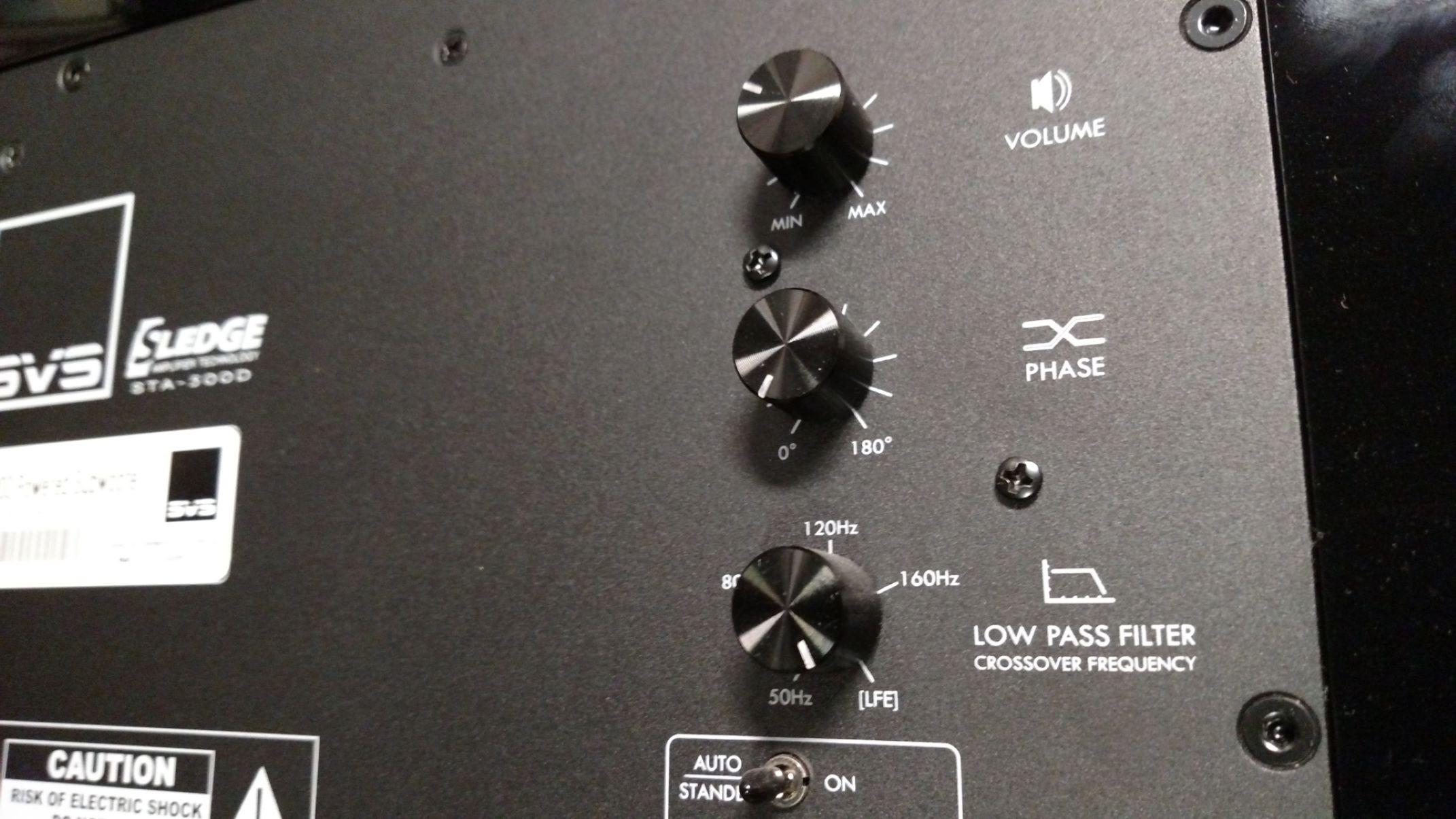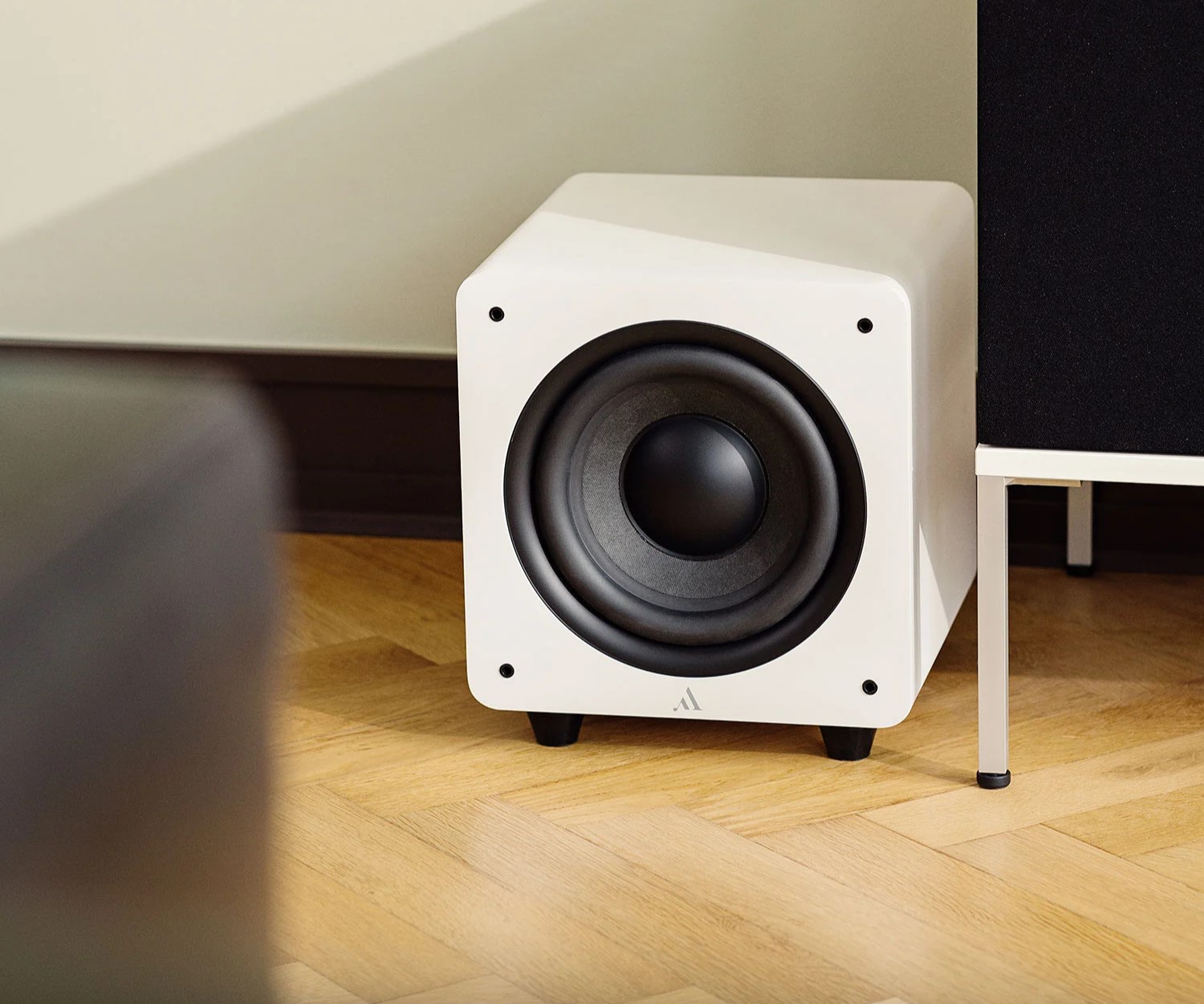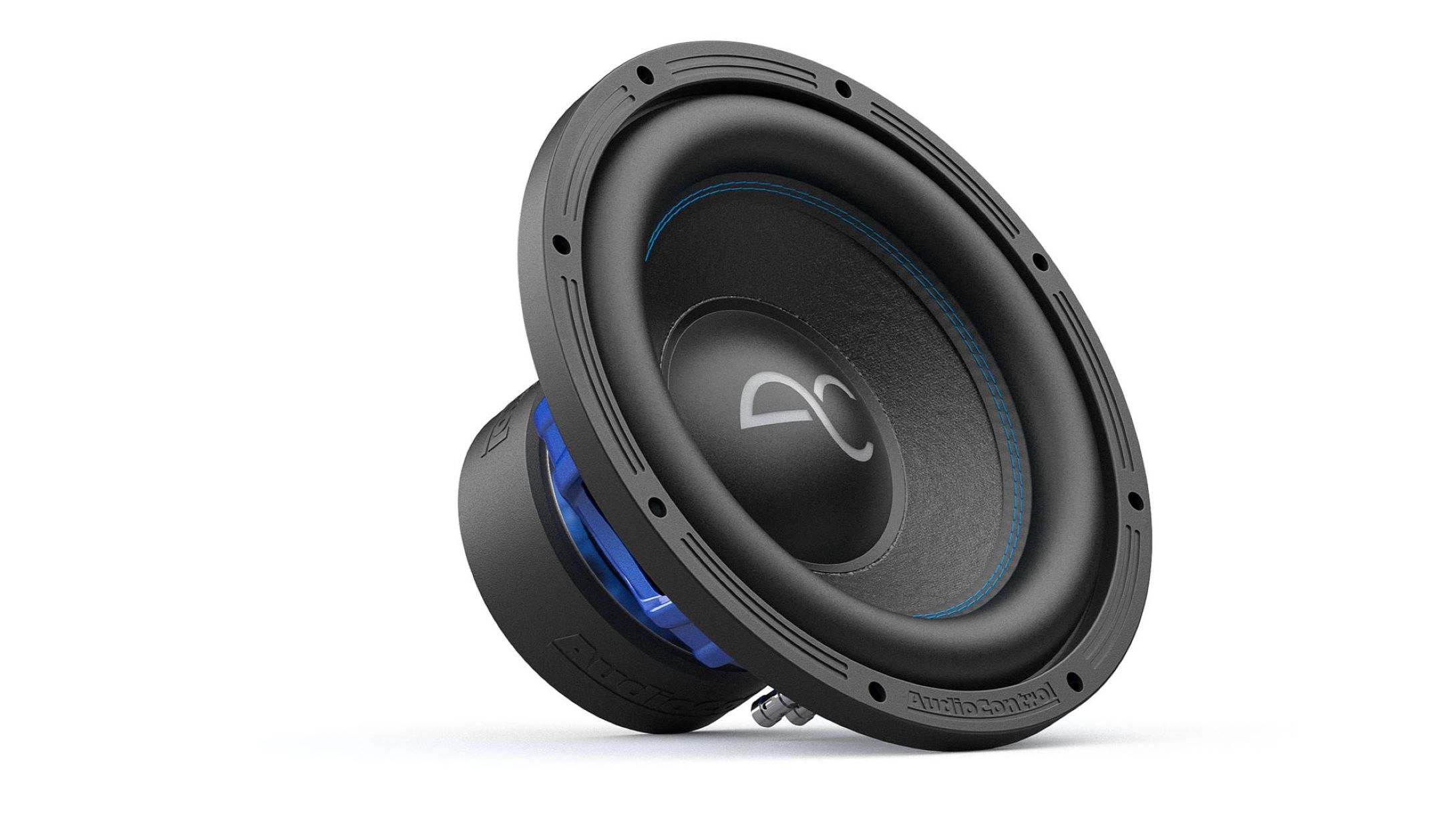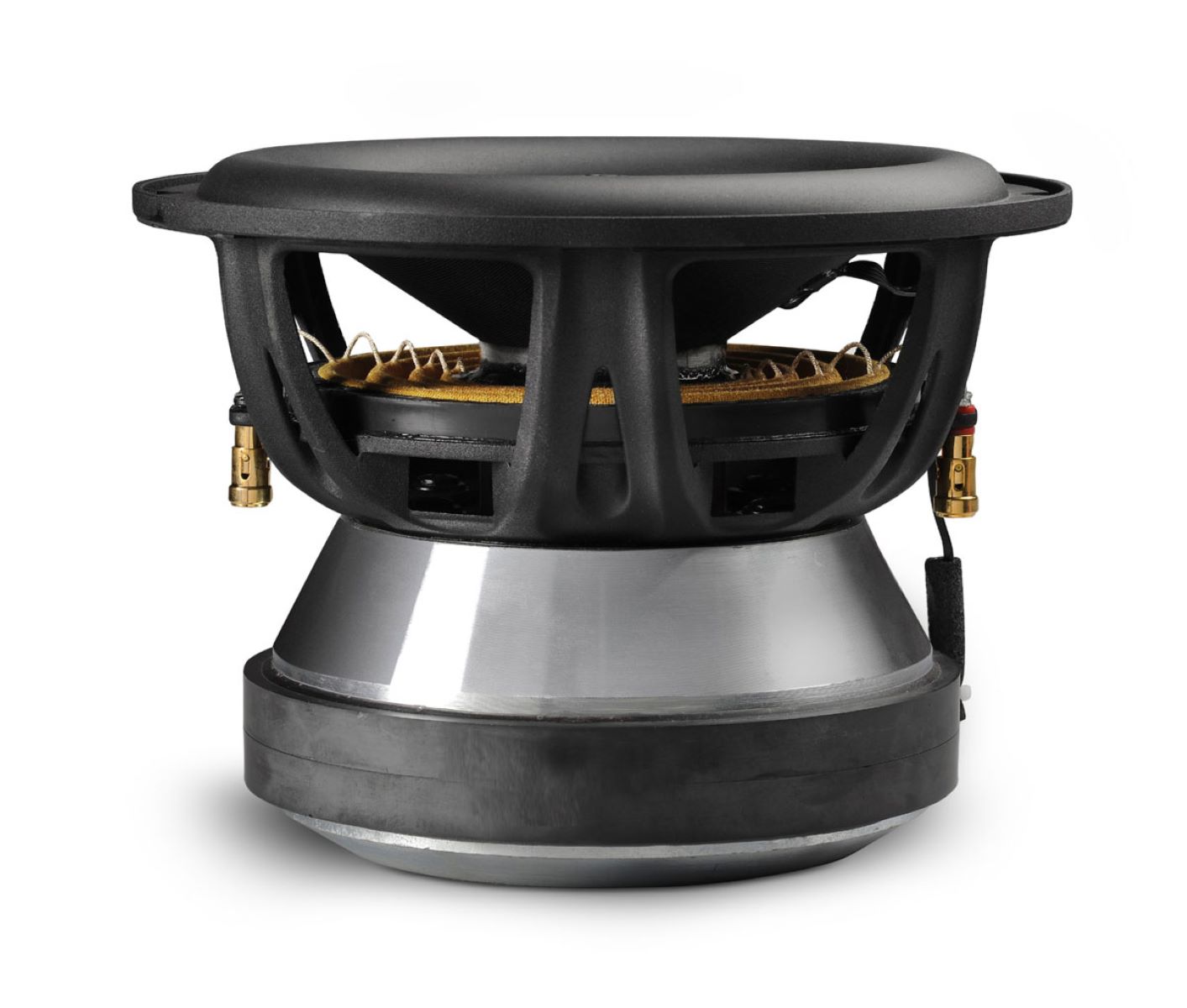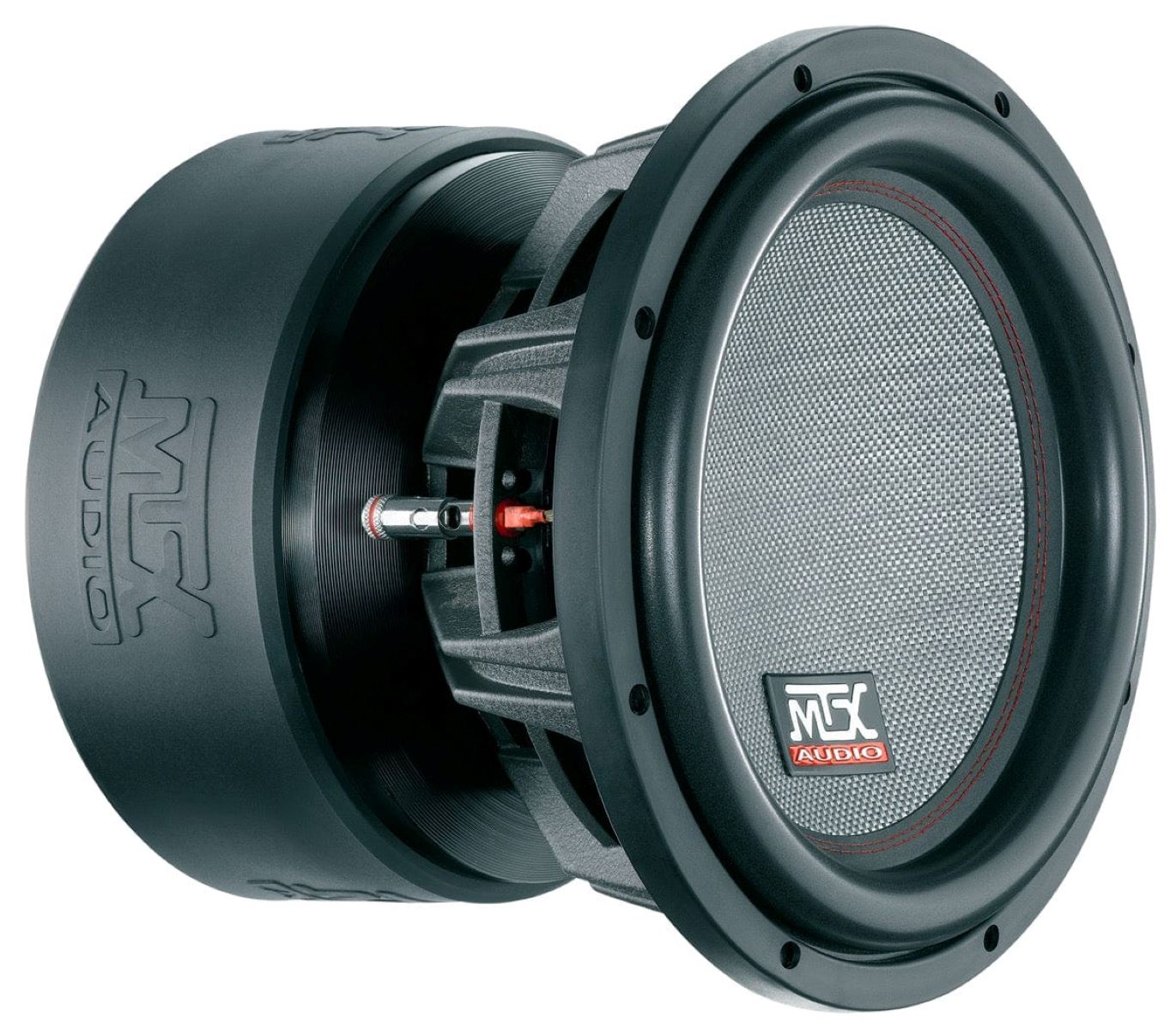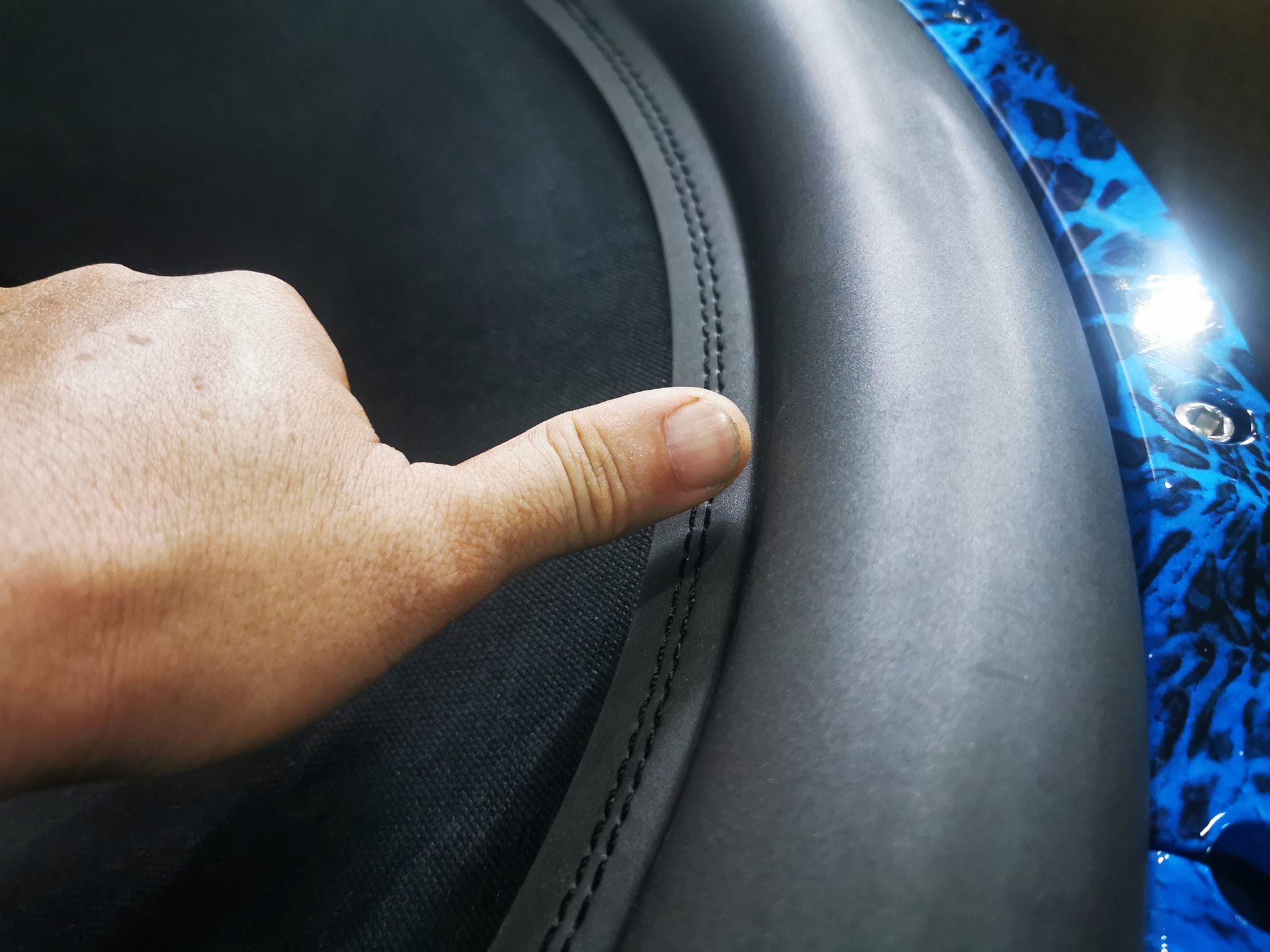Home>Devices & Equipment>Subwoofer>What Is A Crossover For A Subwoofer
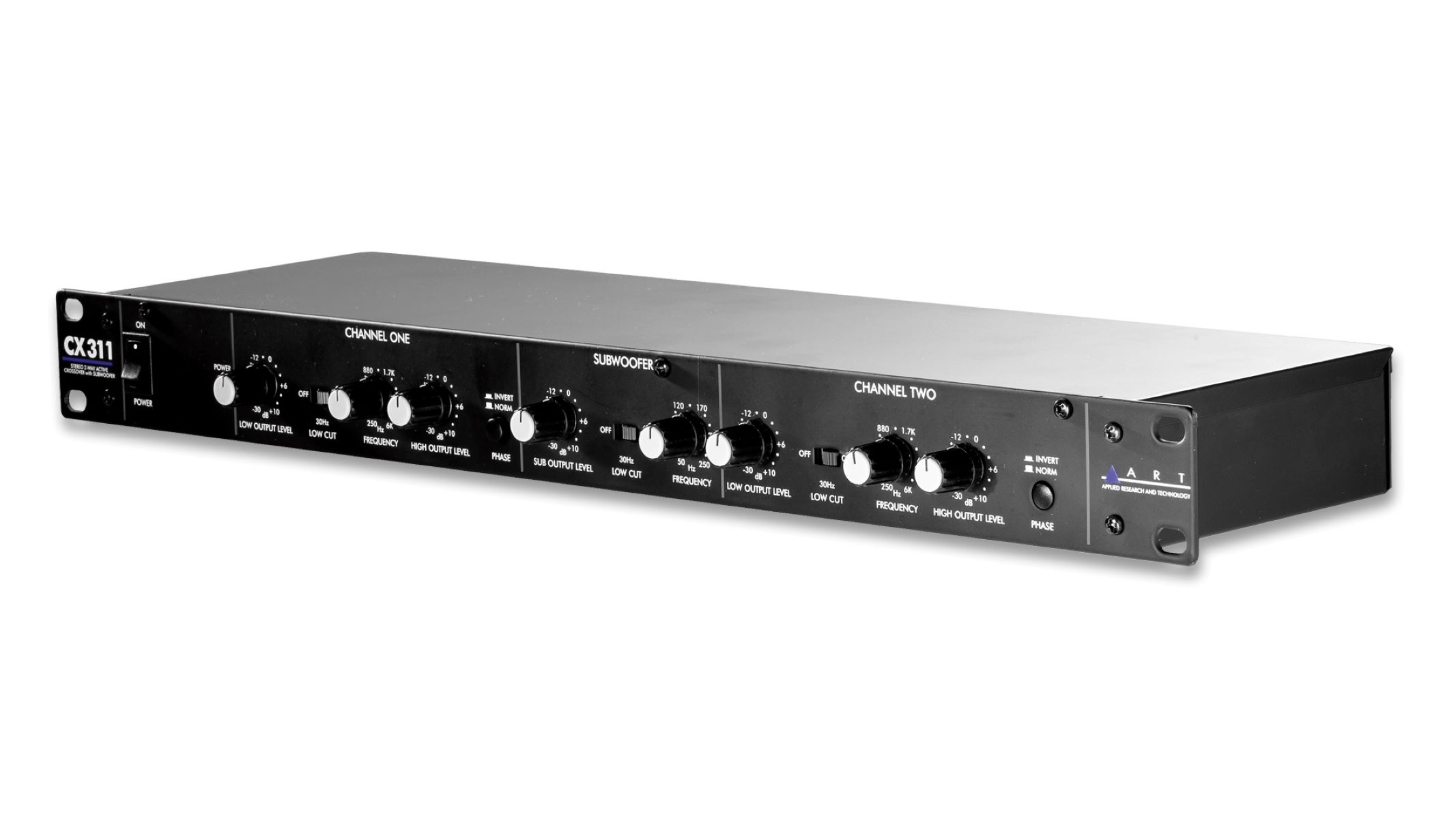

Subwoofer
What Is A Crossover For A Subwoofer
Published: January 21, 2024
Discover what a crossover for a subwoofer is and how it enhances your audio experience. Explore the benefits of using a subwoofer to enhance bass frequencies.
(Many of the links in this article redirect to a specific reviewed product. Your purchase of these products through affiliate links helps to generate commission for AudioLover.com, at no extra cost. Learn more)
Table of Contents
Introduction
When it comes to creating a truly immersive audio experience, a quality subwoofer can make all the difference. Whether you’re a music enthusiast looking to feel the crisp basslines or a movie buff craving the booming sound effects, a subwoofer is an essential component of any audio setup. But what exactly is a subwoofer, and how does it enhance the audio quality?
In simple terms, a subwoofer is a specialized loudspeaker designed to reproduce low-frequency sounds, typically ranging between 20 Hz and 200 Hz. It focuses on delivering deep bass tones that ordinary speakers struggle to reproduce accurately. By dedicatedly handling the low-end frequencies, a subwoofer takes the burden off the main speakers, ensuring clarity, balance, and a more immersive listening experience.
However, simply adding a subwoofer to your audio system is not enough; it needs to be properly integrated with the rest of the speakers. This is where a crossover comes into play.
Definition of a Subwoofer
A subwoofer is a type of loudspeaker specifically designed to reproduce low-frequency audio signals. It is an essential component of a sound system, delivering deep and powerful bass tones that regular speakers cannot produce effectively. The term “subwoofer” is derived from the word “woofer,” which refers to a speaker dedicated to reproducing low-frequency sounds.
A subwoofer consists of various components, including a speaker driver, enclosure, and amplifier. The speaker driver, often larger in size compared to other speakers, is responsible for reproducing the low-frequency sounds accurately. The enclosure, which is usually a sealed or ported box, helps enhance the bass response and control the airflow within the subwoofer. The amplifier provides power to the speaker driver, ensuring it can handle the demanding low-frequency signals.
Subwoofers are commonly used in home theater systems, car audio systems, and professional audio setups. They are especially effective in reproducing the deep bass found in music genres like hip-hop, electronic, and rock, as well as in providing the rumbling impact of explosions and other low-frequency effects in movies and games.
The frequency range of a subwoofer typically starts at around 20 Hz and extends up to 200 Hz. These low-frequency sounds are felt more than heard, creating a visceral and immersive audio experience. By complementing the performance of the main speakers, a subwoofer helps to achieve a balanced and full-range sound reproduction, enhancing the overall audio quality and impact.
In summary, a subwoofer is a specialized loudspeaker designed to reproduce low-frequency sounds, delivering deep and powerful bass tones that regular speakers cannot accurately produce. Whether you’re a music lover or a cinephile, a subwoofer is an essential addition to any audio system, providing a richer and more immersive listening experience.
Understanding Crossover
In the world of audio, a crossover is a crucial component when it comes to fine-tuning the sound produced by a subwoofer. A crossover is a device or circuitry that divides the audio signal into different frequency bands and directs them to the appropriate speakers or drivers. It ensures that each speaker reproduces the frequencies it is best suited for, optimizing the overall sound quality and preventing distortion.
The basic principle of a crossover is to separate the audio frequencies into distinct bands: low-frequency, mid-frequency, and high-frequency. The crossover determines which frequencies are sent to the subwoofer and which are sent to the main speakers, allowing each component to focus on what it does best.
By directing the low-frequency signals to the subwoofer, the crossover ensures that the subwoofer handles the deep bass tones, allowing it to excel in reproducing the low-end frequencies. This allows the main speakers to concentrate on the mid and high frequencies, where they can deliver clearer and more detailed sound reproduction.
A crossover can be passive or active. A passive crossover is typically built into the subwoofer or main speaker enclosure and uses passive components such as capacitors, inductors, and resistors to split the audio signal. On the other hand, an active crossover is an electronic device that is placed between the audio source and the amplifiers. It splits the audio signal before it reaches the amplifiers and requires separate amplification for each frequency band.
Understanding the crossover frequency and slope is essential when setting up a subwoofer. The crossover frequency is the point at which the audio signal is divided between the subwoofer and the main speakers. It is usually set in the range of 80Hz to 120Hz, depending on factors such as the size and capabilities of the speakers. The crossover slope refers to how steeply the audio signal is divided between the subwoofer and the main speakers. A steeper slope ensures a cleaner separation of the frequencies.
Overall, a crossover is a critical tool in ensuring that the right frequencies are sent to the appropriate speakers in an audio system. By properly implementing a crossover, you can achieve a well-balanced and accurate sound reproduction, with the subwoofer handling the low frequencies and the main speakers focusing on the mid and high frequencies.
What Does a Crossover Do for a Subwoofer?
A crossover plays a vital role in optimizing the performance of a subwoofer by directing the appropriate frequencies to the subwoofer and other speakers. Its primary function is to ensure that the subwoofer handles the low-frequency sounds while allowing the main speakers to focus on the mid and high frequencies. Here are some key benefits of using a crossover for a subwoofer:
- Frequency Separation: A crossover divides the audio signal into different frequency bands, allowing the subwoofer to reproduce the low-frequency range accurately. By filtering out the higher frequencies, the subwoofer can concentrate on delivering deep bass tones, providing a richer and more impactful audio experience.
- Preventing Distortion: Sending low-frequency signals to the subwoofer ensures that the main speakers do not have to strain to reproduce frequencies they are not designed to handle. This prevents distortion, improves clarity, and reduces the risk of damaging the main speakers due to overexcursion or excessive power demands.
- Improved Sound Quality: By offloading the low-frequency reproduction to a dedicated subwoofer, the main speakers can focus on delivering clearer and more detailed mid and high-frequency sounds. This separation of frequencies allows each component to perform optimally, resulting in enhanced sound quality and a more immersive listening experience.
- Better Integration: A crossover ensures that the subwoofer seamlessly integrates with the rest of the audio system. By directing the appropriate frequencies to each speaker, it helps maintain a balanced and cohesive soundstage. This integration ensures that the different components work together harmoniously, creating an audio experience that feels natural and well-rounded.
- Customization and Flexibility: With a crossover, you have the flexibility to adjust the crossover frequency and slope to match the characteristics of your specific subwoofer and speakers. This customization allows you to fine-tune the audio performance according to your preferences, achieving the desired balance between bass impact and overall clarity.
Overall, a crossover is essential for a subwoofer to perform optimally within an audio system. It ensures proper frequency separation, prevents distortion, improves sound quality, facilitates better integration, and provides customization options. By incorporating a crossover into your subwoofer setup, you can enjoy a well-balanced audio experience with powerful and accurate bass reproduction.
Types of Crossovers for Subwoofers
When it comes to selecting a crossover for your subwoofer, there are several different types to consider. Each type offers its own advantages and characteristics. Here are the most common types of crossovers for subwoofers:
- Passive Crossovers: Passive crossovers are the most common type found in commercially available subwoofers. They are typically built into the subwoofer or main speaker enclosure and require no additional power source. Passive crossovers use passive components like capacitors, inductors, and resistors to split the audio signal into different frequency bands. They are straightforward to use and require minimal setup.
- Active Crossovers: Active crossovers are electronic devices that sit between the audio source and the amplifiers. Unlike passive crossovers, active crossovers require their power source and dedicated amplification for each frequency band. They offer more control and flexibility in adjusting crossover points, slopes, and other parameters. Active crossovers usually provide higher precision and allow for more refined tuning of the subwoofer’s performance.
- Digital Crossovers: Digital crossovers utilize digital signal processing (DSP) technology to split and manipulate the audio signal. They offer precise control over crossover points, slopes, and a range of additional features. Digital crossovers are often used in advanced audio systems where precise adjustments and room correction capabilities are required.
- Variable Crossovers: Variable crossovers allow for adjustable crossover frequencies. These crossovers typically include control knobs or switches that enable you to fine-tune the crossover points to match your specific subwoofer and speakers. Variable crossovers offer flexibility and the ability to customize the sound reproduction to suit personal preferences and room acoustics.
- Fixed Crossovers: Fixed crossovers have pre-set crossover frequencies that cannot be adjusted by the user. They are commonly found in budget or entry-level subwoofers. While they may lack the customization options of variable crossovers, fixed crossovers can still provide satisfactory performance when properly matched with the subwoofer and speakers.
It’s important to consider the specific needs and requirements of your audio system when selecting a crossover for your subwoofer. Factors such as the type of speakers, room acoustics, and personal preferences should all be taken into account. Whether you opt for a passive crossover, active crossover, digital crossover, variable crossover, or fixed crossover, choosing the right type will help optimize the performance of your subwoofer and enhance your overall audio experience.
Passive vs. Active Crossovers
When it comes to subwoofers, two common types of crossovers are passive crossovers and active crossovers. Each type has its own set of benefits and considerations. Let’s explore the differences between passive and active crossovers:
Passive Crossovers:
Passive crossovers are commonly found in subwoofers and speaker systems. They are built into the subwoofer or main speaker enclosure, requiring no additional power source. Passive crossovers rely on passive components like capacitors, inductors, and resistors to divide the audio signal into different frequency bands.
Advantages of passive crossovers include their simplicity and cost-effectiveness. They are straightforward to use and require minimal setup. Passive crossovers also do not require extra amplifiers for each frequency band, which can be advantageous in certain applications.
However, passive crossovers have limitations when it comes to flexibility and control. Their crossover points and slopes are generally fixed, limiting the customization options. Additionally, passive crossovers can introduce some signal loss and affect overall system efficiency due to the inherent electrical resistance of the passive components.
Active Crossovers:
Active crossovers, on the other hand, are electronic devices that sit between the audio source and the amplifiers. They require their power source and dedicated amplification for each frequency band. Active crossovers offer more control, precision, and flexibility compared to passive crossovers.
One of the key advantages of active crossovers is their ability to adjust crossover points, slopes, and other parameters. This allows for precise tuning of the subwoofer’s performance, ensuring optimal integration with the main speakers and room acoustics. Active crossovers also generally provide superior sound quality, with less signal loss and better phase consistency.
However, active crossovers tend to be more complex and require additional setup and wiring compared to passive crossovers. They also involve extra costs due to the need for amplifiers for each frequency band. Additionally, more advanced active crossovers may require some knowledge of audio signal processing and calibration.
Ultimately, the choice between passive and active crossovers depends on the specific requirements and preferences of your audio system. If simplicity and cost-effectiveness are paramount, passive crossovers may be sufficient. However, if you seek precise control, customization options, and enhanced sound quality, active crossovers offer a more advanced solution. Consider the complexity of your setup, your budget, and desired level of audio accuracy when deciding between passive and active crossovers.
Factors to Consider when Choosing a Crossover for a Subwoofer
Choosing the right crossover for your subwoofer is crucial to achieving optimal audio performance. Here are some factors to consider when selecting a crossover:
- Crossover Type: Determine whether a passive or active crossover is more suitable for your setup. Passive crossovers are commonly found in commercially available subwoofers and are simple to use, while active crossovers offer greater control and precision but require additional equipment and setup.
- Crossover Frequency: The crossover frequency determines the point at which the audio signal is divided between the subwoofer and the main speakers. It is usually set in the range of 80Hz to 120Hz, depending on factors such as the size and capabilities of the speakers. Consider the frequency response of your subwoofer and main speakers to ensure a smooth transition between the frequency ranges.
- Crossover Slope: The crossover slope determines how steeply the audio signal is divided between the subwoofer and the main speakers. Common slopes include 12dB/octave, 24dB/octave, and 48dB/octave. Steeper slopes provide better separation between frequency bands but may require more precise tuning to avoid any frequency gaps or overlaps.
- Room Acoustics: Take into account the characteristics of the room or space where the subwoofer will be used. Large or acoustically challenging rooms may benefit from a more precise crossover with room correction capabilities, such as a digital crossover with DSP technology. Consider the reflections, standing waves, and other acoustic properties of the room when selecting a crossover.
- Speaker Compatibility: Ensure that the crossover is compatible with the impedance and power handling capabilities of your subwoofer and main speakers. Mismatched crossover and speaker impedance can lead to reduced performance or potential damage to the equipment. Check the specifications and recommendations from the manufacturer to ensure proper compatibility.
- Customization Options: Consider whether you prefer a crossover with adjustable crossover points and slopes. Variable crossovers allow for fine-tuning to match the characteristics of your specific subwoofer and speakers. This customization can help achieve a more precise blend and balance of sound.
- Budget and Quality: Determine your budget and balance it with the desired audio quality. While more advanced and feature-rich crossovers may offer superior performance, they also come with a higher price tag. Consider your priorities and invest in a crossover that strikes the right balance between your budget and sound expectations.
By considering these factors, you can make an informed decision when choosing a crossover for your subwoofer. Keep in mind that the goal is to achieve seamless integration between the subwoofer and the main speakers, ensuring a balanced and immersive audio experience.
Conclusion
A crossover is an essential component when it comes to optimizing the performance of a subwoofer. It plays a crucial role in directing the appropriate frequencies to the subwoofer and main speakers, ensuring a well-balanced and immersive audio experience. By dividing the audio signal into different frequency bands, a crossover allows the subwoofer to focus on reproducing deep bass tones, while the main speakers handle mid and high frequencies.
When choosing a crossover for your subwoofer, factors such as the type of crossover, crossover frequency, crossover slope, room acoustics, speaker compatibility, customization options, and budget should all be taken into consideration. Passive crossovers, active crossovers, digital crossovers, variable crossovers, and fixed crossovers each have their own benefits and considerations.
Remember that the goal of a crossover is to achieve proper frequency separation, prevent distortion, improve sound quality, facilitate better integration, and provide customization options. By selecting the right crossover for your subwoofer setup, you can enhance the overall audio performance, creating a more immersive and enjoyable listening experience.
Whether you’re a music enthusiast seeking the deep basslines or a movie buff craving the thundering sound effects, a well-integrated subwoofer with an appropriate crossover can make all the difference. Invest the time and effort in selecting the right crossover, and you’ll be rewarded with a richer, more accurate, and more impactful audio experience.


